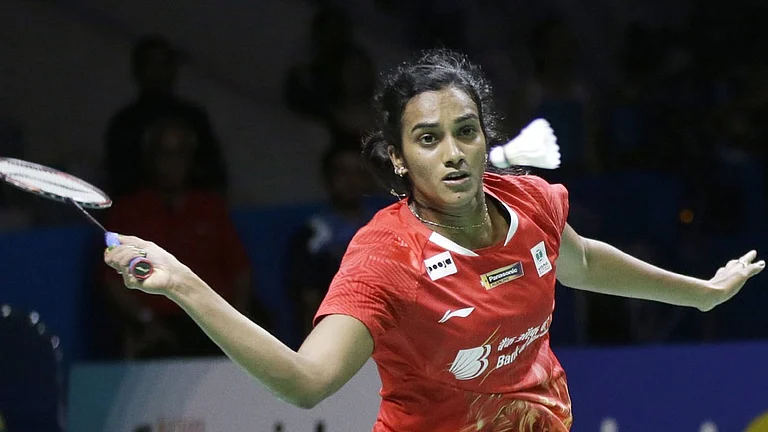Nutrition is misunderstood, and India has a long way to go to ensure no one goes to sleep hungry.
When the Global Hunger Index (GHI), 2019 report was released, India ranked 102 among 117 countries. Both the Indian government and civil society are highly cognizant of this problem which is staring at us in the face.
From mid-day meal schemes to nutrition programs to the costly but much needed nutrition rehabilitation centers, From public sector led reforms and schemes (iodization of salt, fortification of wheat, loans for kitchen gardens etc) to civil society programs like mother child nutrition, awareness, demand generation etc to private sector start-up programs like Iron Fish, Iron lead, apps etc, we've tried it all. But despite all this, at least 15 per cent of Indians --mostly women and children-- go to bed hungry. Some progress has been made, yet more than half of the women of reproductive age are anaemic, either dying at delivery or unable to live a fully productive quality life.
In order for India to make strides in battling malnourishment, one has to be cognizant of the fact that the problem is deep and diverse, and that every stakeholder has a role to play.
In 2014, I was studying the role of Nutrition Rehabilitation Centers (NRC), and one interview stuck with me. A young mother, Sunita (name changed) was leaving the centre after just two days of care instead of the mandatory fortnight. I was very curious because the NRC had taken good care of her, they were respectful, empathetic and provided nutrition to her and her child for free. But Sunita, ever practical, knew that her three-year-old son was at home, and he too needed care.
Though stunned, I kept my emotions in check . Sunita was at the NRC with her newborn daughter - whose chances of survival depended on the care the center was providing. In further conversations with the nurses and caregivers at the NRC I learnt that Sunita’s decision was not an isolated one. It was common for mothers to discontinue the services of the rehabilitation center if there was a boy child to be taken care of at home. Most mothers who stay the entire length of time are those with malnourished sons. There seems to be a clear, conscious trend of decision making that exposes the gender bias of care-giving.
Causes of malnutrition also comprise structural violence, or patriarchal social norms. Given our resource constraints, we are often unable to design systems that address the larger social norms that drive decision making critical to addressing stunting, wasting and anaemia. Combined with the scarcity mindset that drives decision making among those who need our systems the most, we find ourselves in a quagmire.
So when we do a deep dive into efforts that India should make to meet the nutrition requirements to reduce stunting, wasting, and anaemia by 2022, we discover a complicated puzzle with many small pieces and much lost in translation in the journey between policy and implementation.
Inter-sectoral partnerships and mainstreaming efforts like POSHAN Abhiyaan is a direction that offers much hope, but we must ask ourselves whether our goals are achievable with this alone. What does it really take as a country, as communities, as families and as individuals to tackle a problem that is keeping us from meeting not only our own economic goals but also killing many of our children and is adversely affecting entire generations?
The answers are simple yet complex. It is at the grass roots, at the kitchens and family structures, where the shift needs to happen - and that is possible only when women like Sunita find safe spaces that enable them to not only care for themselves but also make astute decisions for the long term health and well-being of those in their care. And this requires an inter-sectorial partnership that introduces the nutrition narrative hand in hand with all interventions - be it in healthcare, social protection, livelihoods, urban planning, education, economy, agriculture and more.
Understanding of health and nutrition cannot be restricted to the hands of health professionals. Democratizing the understanding of nutrition through a plethora of media led interventions, combined with thoughtful system re-engineering at every touch point - be it at points of purchase, education, workplaces, community institutions, clubs and more , is extremely critical.
We are staring into an abyss of deficits - knowledge deficit, skill deficit, food insecurity - which form the starting point of an intergenerational cycle which loops repeatedly. And it stems from an often normative view of inequity, stratification and skewed burden of responsibility.
This is an everyday problem for and requires everyone to get down to tackling it for themselves and for those around them. And sometimes, as communities, we need to figure out what it would take to plate a meal that is high in nutritional value at a cost that is affordable. The answers are varied - from urban planning that allows hyper-local kitchen gardens, to figuring out core cost and effort investment, water, sanitation and hygiene safeguards, to enabling spaces that channel empathy to empower women and children to make better food choices, and more.
Unless we can do this, our nation is doomed to keep running to stay in place, while our people continue to go to bed hungry every night, night after night.
(The author is a partner of Swasti The Health Catalyst Management Services, the health lead of the #COVIDActionCollab. She actively works towards making #EverydayWellbeing a reality for everyone)





















